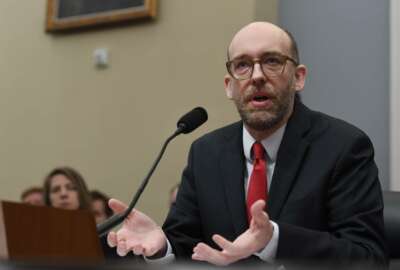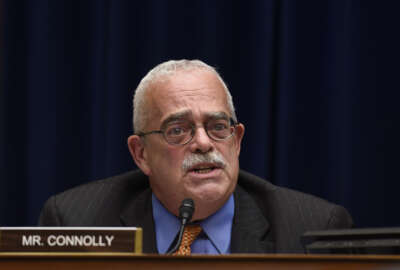
House appropriators advance 2020 federal pay raise, reject OPM-GSA merger
A 3.1% federal pay raise in 2020 is another step closer to reality, as appropriators on Tuesday advanced the proposal to the full House for a vote.
A 3.1% federal pay raise is another step closer to reality.
The House Appropriations Committee on Tuesday cleared the raise as part of the 2020 financial services and general government spending bill. The measure, either on its own or as part of a package of other appropriations bills, now heads to the full House for a vote.
Specifically, the proposal suggests a 2.6% across-the-board pay raise with an additional 0.5% adjusted for locality pay.
The federal pay raise advanced in the House Appropriations Committee with little discussion and controversy. Yet Tuesday’s activity is only one piece of a multi-faceted process. It’s unclear what the Senate will propose, as the chairman of the Senate Appropriations Financial Services and General Government Subcommittee has previously opposed federal pay raises in the past.
A 3.1% federal pay raise is a departure from the President’s proposed pay freeze for civilian employees in 2020. The Office of Management and Budget has described its vision to help agencies better manage existing funds to reward only the highest performing federal employees or those with critical skill sets — instead of implementing an across-the-board pay raise for all.
Several federal employee organizations applauded the bill’s advancement. The appropriations measure also includes additional funding for the IRS, nearly $700 million more for the agency in 2020 compared to existing funding levels.
Customs and Border Protection would also receive an additional $91 million to hire 1,200 more CBP officers and other personnel.
“Improving pay for all frontline federal workers and alleviating the staffing crisis at the ports of entry are two major developments from Capitol Hill that will resonate across the country,” Tony Reardon, president of the National Treasury Employees Union, said in a statement. “And an increase in funding for the IRS is welcome news for taxpayers still dealing with changes to the tax laws and in need of trained employees who can help.”
House members reject OPM-GSA merger
Citing its concerns with the Trump administration’s proposal to merge the Office of Personnel Management with the General Services Administration, the Appropriations Committee also advanced additional funding for OPM.
Specifically, the committee cleared a $43.4 million funding boost for OPM, which will face a $70 million shortfall when the National Background Investigations Bureau and its security clearance business leave OPM for the Defense Department on Oct. 1.
The administration has cited these financial challenges, as well as the agency’s well-documented IT and structural problems, as reasons for the merger proposal.
But the Appropriations Committee included specific language that blocks the OPM-GSA merger, instead choosing to bolster OPM and its budget rather than eliminating the agency altogether.
In addition, the committee’s bill requires OPM to submit detailed, quarterly updates to Congress and the agency’s own inspector general about the reorganization, including a timeline of any planned moves, impact on OPM funding, changes in staffing levels and impacts on employee unions.
Related Stories

OMB tries again to pitch federal pay freeze, performance awards to Congress

5 questions about the OPM-GSA merger as appropriators return to Capitol Hill

Congress not yet convinced of Trump administration’s proposed OPM-GSA merger
“We also appreciate the committee’s understanding that dismantling OPM and moving civil service policy to the Executive Office of the President would eliminate safeguards against a politicized federal workforce and put vital programs at risk of not receiving the attention they deserve,” Ken Thomas, president of the National Active and Retired Federal Employees (NARFE) Association, said Tuesday in a statement. “NARFE urges both the House and Senate to preserve the federal pay raise and allow OPM and GSA to remain separate entities in their final legislation.”
Beyond the administration’s reporting requirements for the proposed OPM-GSA merger, the committee also gave OPM an extensive to-do list to address several longstanding federal human capital management challenges.
The committee expressed concern with everything from the lengthy federal hiring process and USAJobs.gov to OPM’s challenges in processing retirement benefits.
“The committee continues to be concerned that capable candidates with the option to work in either the private or public sector may be dissuaded from applying for or accepting federal positions due to the length and cumbersome nature of the federal hiring process,” the committee’s report reads.
Members requested updates from OPM on the status of its ongoing efforts to improve retirement processing and federal hiring. The committee urged OPM to gather input and suggestions from both hiring managers and job applicants.
It also instructed the agency to consider a specific hiring policy update.
“The committee encourages OPM to review policies and guidelines regarding hiring and firing of individuals who use marijuana in states where that individual’s private use of marijuana is not prohibited under the law of the state,” the bill report reads. “These policies should reflect updated changes to the law on marijuana usage and clearly state the impact of marijuana usage on federal employment.”
In addition, the committee encouraged OPM to continue to expand telework across government while tracking agency best practices and success stories.
And finally, the appropriations members asked for a comprehensive review of locality pay rates in Alaska, Hawaii, Puerto Rico, U.S. Virgin Islands, Guam, the Northern Mariana Islands and American Samoa.
“The committee is aware of instances in which a federal agency or department directs one or more employees to work at a temporary work site in a General Schedule locality pay area which has a higher rate than that of the locality pay area in which the employee’s official duty station is located,” the report reads. “The committee encourages OPM to consider promulgating guidelines to federal agencies or departments directing them to compensate employees at the higher rate of the two locality zones in instances when employees are directed on a regular or reoccurring basis to work at a temporary work site with a higher locality pay than the employee’s duty station.”
Copyright © 2024 Federal News Network. All rights reserved. This website is not intended for users located within the European Economic Area.
Nicole Ogrysko is a reporter for Federal News Network focusing on the federal workforce and federal pay and benefits.
Follow @nogryskoWFED



